The Critique of Pure Reason by Immanuel Kant (latest books to read .txt) 📕
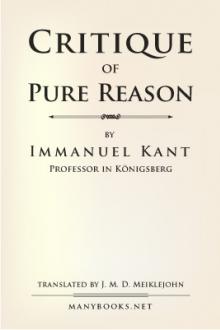
- Author: Immanuel Kant
- Performer: -
Book online «The Critique of Pure Reason by Immanuel Kant (latest books to read .txt) 📕». Author Immanuel Kant
The latter mode of thought is evidently based upon a logical principle, the aim of which is the systematic completeness of all cognitions. This principle authorizes me, beginning at the genus, to descend to the various and diverse contained under it; and in this way extension, as in the former case unity, is assured to the system.
For if we merely examine the sphere of the conception which indicates a genus, we cannot discover how far it is possible to proceed in the division of that sphere; just as it is impossible, from the consideration of the space occupied by matter, to determine how far we can proceed in the division of it. Hence every genus must contain different species, and these again different subspecies; and as each of the latter must itself contain a sphere (must be of a certain extent, as a conceptus communis), reason demands that no species or subspecies is to be considered as the lowest possible.
For a species or subspecies, being always a conception, which contains only what is common to a number of different things, does not completely determine any individual thing, or relate immediately to it, and must consequently contain other conceptions, that is, other subspecies under it. This law of specification may be thus expressed: entium varietates non temere sunt minuendae.
But it is easy to see that this logical law would likewise be without sense or application, were it not based upon a transcendental law of specification, which certainly does not require that the differences existing phenomena should be infinite in number, for the logical principle, which merely maintains the indeterminateness of the logical sphere of a conception, in relation to its possible division, does not authorize this statement; while it does impose upon the understanding the duty of searching for subspecies to every species, and minor differences in every difference. For, were there no lower conceptions, neither could there be any higher. Now the understanding cognizes only by means of conceptions; consequently, how far soever it may proceed in division, never by mere intuition, but always by lower and lower conceptions. The cognition of phenomena in their complete determination (which is possible only by means of the understanding) requires an unceasingly continued specification of conceptions, and a progression to ever smaller differences, of which abstraction bad been made in the conception of the species, and still more in that of the genus.
This law of specification cannot be deduced from experience; it can never present us with a principle of so universal an application. Empirical specification very soon stops in its distinction of diversities, and requires the guidance of the transcendental law, as a principle of the reason—a law which imposes on us the necessity of never ceasing in our search for differences, even although these may not present themselves to the senses. That absorbent earths are of different kinds could only be discovered by obeying the anticipatory law of reason, which imposes upon the understanding the task of discovering the differences existing between these earths, and supposes that nature is richer in substances than our senses would indicate. The faculty of the understanding belongs to us just as much under the presupposition of differences in the objects of nature, as under the condition that these objects are homogeneous, because we could not possess conceptions, nor make any use of our understanding, were not the phenomena included under these conceptions in some respects dissimilar, as well as similar, in their character.
Reason thus prepares the sphere of the understanding for the operations of this faculty: 1. By the principle of the homogeneity of the diverse in higher genera; 2. By the principle of the variety of the homogeneous in lower species; and, to complete the systematic unity, it adds, 3. A law of the affinity of all conceptions which prescribes a continuous transition from one species to every other by the gradual increase of diversity. We may term these the principles of the homogeneity, the specification, and the continuity of forms.
The latter results from the union of the two former, inasmuch as we regard the systematic connection as complete in thought, in the ascent to higher genera, as well as in the descent to lower species. For all diversities must be related to each other, as they all spring from one highest genus, descending through the different gradations of a more and more extended determination.
We may illustrate the systematic unity produced by the three logical principles in the following manner. Every conception may be regarded as a point, which, as the standpoint of a spectator, has a certain horizon, which may be said to enclose a number of things that may be viewed, so to speak, from that centre. Within this horizon there must be an infinite number of other points, each of which has its own horizon, smaller and more circumscribed; in other words, every species contains subspecies, according to the principle of specification, and the logical horizon consists of smaller horizons (subspecies), but not of points (individuals), which possess no extent. But different horizons or genera, which include under them so many conceptions, may have one common horizon, from which, as from a mid-point, they may be surveyed; and we may proceed thus, till we arrive at the highest genus, or universal and true horizon, which is determined by the highest conception, and which contains under itself all differences and varieties, as genera, species, and subspecies.
To this highest standpoint I am conducted by the law of homogeneity, as to all lower and more variously-determined conceptions by the law of specification. Now as in this way there exists no void in the whole extent of all possible conceptions, and as out of the sphere of these the mind can discover nothing, there arises from the presupposition of the universal horizon above mentioned, and its complete division, the principle: Non datur vacuum formarum. This principle asserts that there are not different primitive and highest genera, which stand isolated, so to speak, from each other, but all the various genera are mere divisions and limitations of one highest and universal genus; and hence follows immediately the principle: Datur continuum formarum. This principle indicates that all differences of species limit each other, and do not admit of transition from one to another by a saltus, but only through smaller degrees of the difference between the one species and the other. In one word, there are no species or subspecies which (in the view of reason) are the nearest possible to each other; intermediate species or subspecies being always possible, the difference of which from each of the former is always smaller than the difference existing between these.
The first law, therefore, directs us to avoid the notion that there exist different primal genera, and enounces the fact of perfect homogeneity; the second imposes a check upon this tendency to unity and prescribes the distinction of subspecies, before proceeding to apply our general conceptions to individuals. The third unites both the former, by enouncing the fact of homogeneity as existing even in the most various diversity, by means of the gradual transition from one species to another. Thus it indicates a relationship between the different branches or species, in so far as they all spring from the same stem.
But this logical law of the continuum specierum (formarum logicarum) presupposes a transcendental principle (lex continui in natura), without which the understanding might be led into error, by following the guidance of the former, and thus perhaps pursuing a path contrary to that prescribed by nature. This law must, consequently, be based upon pure transcendental, and not upon empirical, considerations. For, in the latter case, it would come later than the system; whereas it is really itself the parent of all that is systematic in our cognition of nature. These principles are not mere hypotheses employed for the purpose of experimenting upon nature; although when any such connection is discovered, it forms a solid ground for regarding the hypothetical unity as valid in the sphere of nature—and thus they are in this respect not without their use.
But we go farther, and maintain that it is manifest that these principles of parsimony in fundamental causes, variety in effects, and affinity in phenomena, are in accordance both with reason and nature, and that they are not mere methods or plans devised for the purpose of assisting us in our observation of the external world.
But it is plain that this continuity of forms is a mere idea, to which no adequate object can be discovered in experience. And this for two reasons. First, because the species in nature are really divided, and hence form quanta discreta; and, if the gradual progression through their affinity were continuous, the intermediate members lying between two given species must be infinite in number, which is impossible. Secondly, because we cannot make any determinate empirical use of this law, inasmuch as it does not present us with any criterion of affinity which could aid us in determining how far we ought to pursue the graduation of differences: it merely contains a general indication that it is our duty to seek for and, if possible, to discover them.
When we arrange these principles of systematic unity in the order conformable to their employment in experience, they will stand thus: Variety, Affinity, Unity, each of them, as ideas, being taken in the highest degree of their completeness. Reason presupposes the existence of cognitions of the understanding, which have a direct relation to experience, and aims at the ideal unity of these cognitions—a unity which far transcends all experience or empirical notions. The affinity of the diverse, notwithstanding the differences existing between its parts, has a relation to things, but a still closer one to the mere properties and powers of things. For example, imperfect experience may represent the orbits of the planets as circular. But we discover variations from this course, and we proceed to suppose that the planets revolve in a path which, if not a circle, is of a character very similar to it. That is to say, the movements of those planets which do not form a circle will approximate more or less to the properties of a circle, and probably form an ellipse. The paths of comets exhibit still greater variations, for, so far as our observation extends, they do not return upon their own course in a circle or ellipse. But we proceed to the conjecture that comets describe a parabola, a figure which is closely allied to the ellipse. In fact, a parabola is merely an ellipse, with its longer axis produced to an indefinite extent. Thus these principles conduct us to a unity in the genera of the forms of these orbits, and, proceeding farther, to a unity as regards the cause of the motions of the heavenly bodies—that is, gravitation. But we go on extending our conquests over nature, and endeavour to explain all seeming deviations from these rules, and even make additions to our system which no experience can ever substantiate—for example, the theory, in affinity with that of ellipses, of hyperbolic paths of comets, pursuing which, these bodies leave our solar system and, passing from sun to sun, unite the most distant parts of the infinite universe, which is held together by the same moving power.
The most remarkable circumstance connected with these principles is that
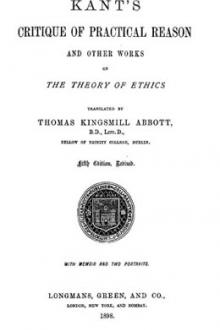
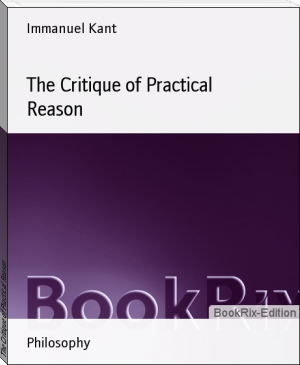
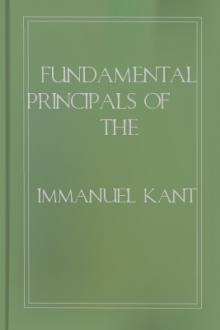
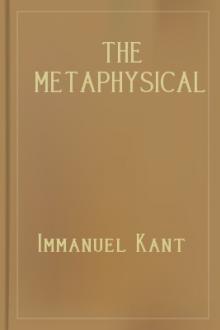
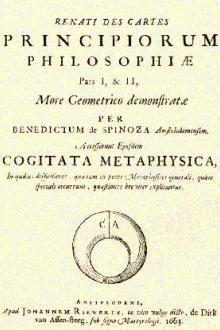
Comments (0)